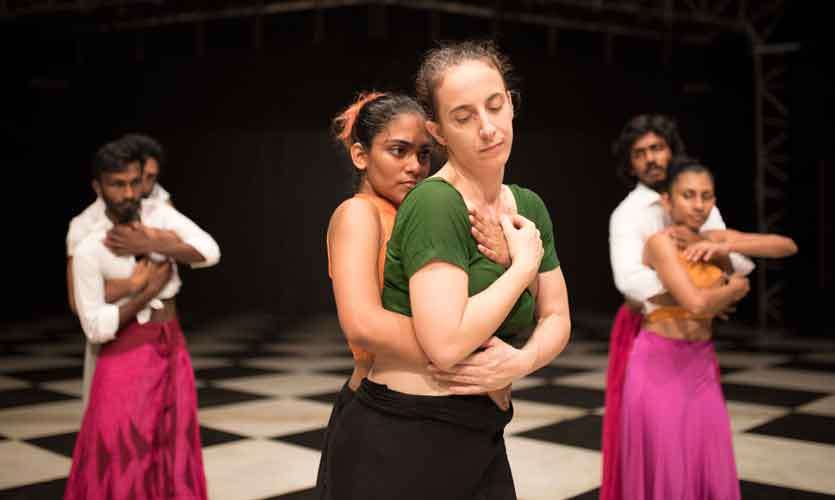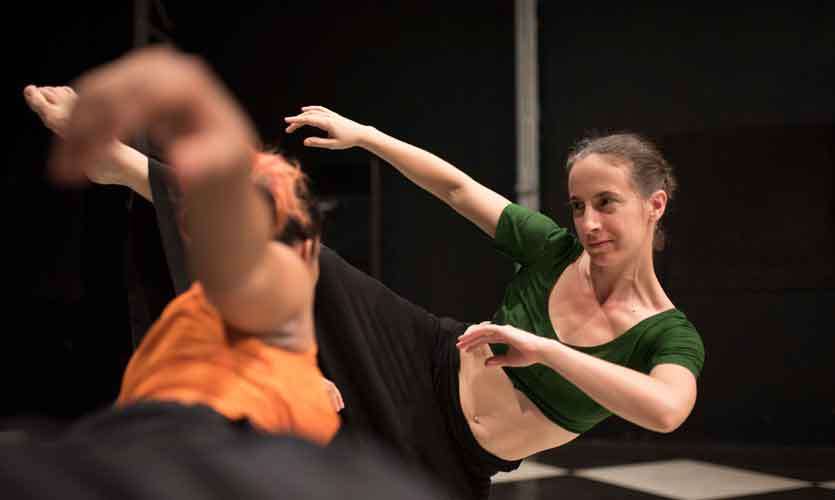
Mar 19 2019.
views 724Today on the Buzz I speak to Umeshi who has brought new meaning to dancing and what it means to her. Umeshi Rajeendra is the founder and artistic director of Mesh Academy of Dance, Sri Lanka's first experimental and interdisciplinary dance.
Now you can enjoy an evening of amazing performances at “Pluralism”. It’s an intimate dance experience by Mesh Dance Theatre, with original music by Natasha Senanayake and featuring music by other artists. The production denotes diverse views on prevailing topics around the world. They are raising money for the dancers and their training internationally and for Room to Read, a non-profit focused on literacy and girls education in Sri Lanka.
Go support the cause; the show will be held on the 5th and 6th of April at Park Street Stables
Tickets are available at http://taktikbook.lk

What made you fall in love with dance?
There wasn’t a specific moment that I fell in love with dance. I started dancing at the age of 6 but you don’t realize you are a part of something so profound when you are below 13 years of age, but all of a sudden something clicks and you just know that this is what you have to and need to do for the rest of your life. After all, movement is the most primal and important forms of expression and in a single fleeting moment, it makes you feel alive, switched on and absolutely aware. It frees you and teaches you about the endless possibilities in life. I love that feeling!
When did you start MESH and what’s the story behind the name?
Mesh started in 2015 as an experimental platform to train contemporary dancers and prospective choreographers as well as to create a vibrant space that awakens the love of dance through the integration of the body, the mind and the spirit. The word ‘experimental’ is to emphasize our interest to try alternative methods and think outside the box by placing emphasis on the process itself rather than the results. We believe focusing on perfection is not as interesting or as educational as exploring innovative ways to create, to build and to research. Therefore, every investigation of the teachers and the students take on is an example of experimentation. Hence, the name MESH came about as a result of our interest in bringing together and connecting different individuals from different backgrounds to create and teach the art form.
Tell me about your upcoming show, PLURALISM? What can we expect on stage?
Pluralism will be an immersive world of sensorial movement of disorientation which will be fun, weird, and fresh. It is premiering three works of art with original music by Natasha Senanayake. The performance aims to raise funds for the dancers in their training internationally, and for Room to Read, a non-profit focused on developing children’s literacy acquisition and life skills for young girls. We believe Arts and Education are crucial to creating an understanding society.
With regards to what to expect on stage, that’s a tough one. All I can say is that it is not merely a showcase of skill, or entertainment. The movement language is different, weird, fluid, and the stage imagery will constantly surprise you with an emotional echo here and there. We do not stick to the status quo and/or how the general public would view male and female dancers. What you will see is that all our dancers are equal and there is no gender difference.

What’s your style of dancing? Do you always perform a story?
I have trained in many styles, but I call myself a contemporary dance artist because contemporary dance is a philosophy that changes based on usage and what’s in the now. I always try to reinvent my movement vocabulary based on my research interests and this explores different stylistic choices. I don’t always perform a story. It depends on what I am exploring and what the piece I am envisioning requires. Sometimes it requires a story, but to be honest, most of the time it doesn’t. Because when you have to say a story, it limits your creativity to an extent. When I work with the dancers to explore movement vocabulary I don’t see the need to finish the “story” or work. I just dive into the creative process and sort of see where it takes us with some kind of logic and sense.
What do you want the audience to be left with after the show?
My objective and hope for the audience is that they are able to leave the performance with an experience, where even if someone might not fully understand where we are coming from or understand the theme, but are still able to connect or create their own understanding with what we are creating, and that they somehow feel a part of what is happening with us as performers. I don’t wish for the separation between audience and performers because everyone in the space is having some sort of experience and what that experience is depends on how he or she takes it in. I want the audience to be able to feel the experience regardless of where and how it is being performed.

Tell me about the crew / other dancers on stage?
I have 12 dancers who come from different backgrounds and from around Sri Lanka and internationally. They work incredibly hard and are some of the most talented dancers I have had the privilege of teaching and working with. Ages of the dancers range from 18-35.
What are the projects you are currently involved in?
I am currently involved in choreographing for Grease the Musical by Cold Theatre 7 and I am creating a piece of work to be presented at Denison University in the USA with some of my dancers which takes place at the end of April. We also have the American Dance Festival taking place in June, where I send 2-3 students to get training and exposure every year, therefore we are preparing for that as well.
How did you get involved in Room to Read?
I was raised in a household that valued education and so when I returned to Sri Lanka I knew I wanted to be involved with an education-related nonprofit organization. Room to Read brings the magic and science of reading into the rural communities, while simultaneously teaching young girls life skills so that they can navigate their life regardless of what comes their way. My dancers and I truly value giving back when and wherever possible and for us education and art are both crucial, therefore through this performance we are aiming to pay our dancers so that they can train internationally, and also raise money for Room to Read.
How has the support been towards these ventures, and what would you request from government and private organizations?
The arts are fundamental to our humanity. They ennoble and inspire us—fostering creativity, goodness, and beauty. The arts are also a fundamental component of a healthy community—strengthening them socially, educationally, and economically, especially during difficult times. Therefore, I do feel deeply that the government and private organizations should support more local art organizations because your neighborhood art company is as good and as important as a world-class museum because they all have to start somewhere and Sri Lanka has so much talent to showcase to the world. If we work together, we can truly lift Sri Lanka as a hub for many things. The more these organizations support one another and the arts, the more we will be able to flourish our communities and our economy. Think about New York, Singapore, Berlin etc.

Give me your thoughts on the local art industry, do you feel it has a good future, and what are the current pressing issues?
The local arts industry has come a long way since I was younger, and there are some incredible artists who are working hard to lift it up, but I do think we still have a long way more to go to create a future where art is done professionally and one that encourages, collaborates and pushes one another. In order for us to tap into the potential of the arts industry we must be willing to let go certain stereotypical beliefs towards the industry. It is important that we collectively create a diverse, collaborative and inspiring environment in which these talented individuals can thrive. Most importantly, the art industry shouldn’t be viewed as an industry that stands alone but rather as a link to all the other industries and the fact that it is not looked at this way is the pressing issue because it creates a lack of respect and value for the arts.
0 Comments